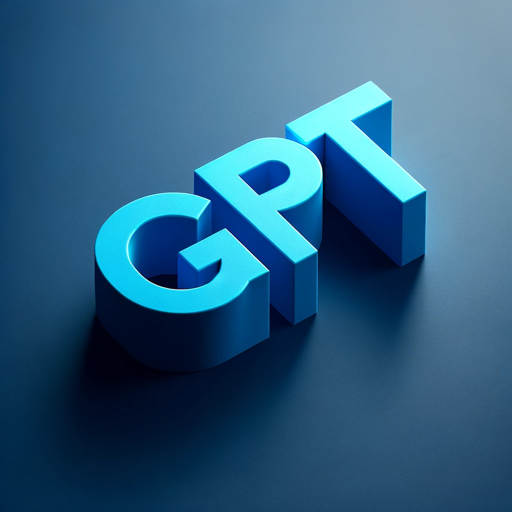RTL GPT-HDL design assistance
AI-powered HDL design co-pilot
Generate a system verilog code for MIPS pipelined CPU?
Insert a system verilog code for review?
Create a test-bench for 32 bit Multiply-Accumulate block?
Create a D-Flip Flop code, including DFT implementation?
Related Tools
Load More
Correct English GPT
Write English like a native speaker. Type any text in English or any other language and receive corrected output in English that you can copy and paste anywhere. To improve the style of the corrected text, send "s"

Research GPT
Your go-to source for well-researched information!

GPT Selector
Expert in suggesting GPTs based on categories.

Gradio GPT
Expert in Gradio app development, providing efficient and optimized code.

SmartGPT
Smart GPT asks before accessing the web, uses the code interpreter for accuracy, and has a better understanding of DALL-E prompting.

GPT Store
Directly recommends GPT models with links.
20.0 / 5 (200 votes)
Introduction to RTL GPT
RTL GPT is designed to assist users in crafting RTL (Register-Transfer Level) designs using Hardware Description Languages (HDLs) such as VHDL, Verilog, SystemVerilog, and High Level Synthesis (HLS). The primary functions of RTL GPT include providing code generation, optimization tips, and best practices for digital, analog, and mixed-signal design. It aims to streamline the design process by offering examples, guiding users through complex design scenarios, and ensuring that the designs meet performance, power, and area (PPA) requirements. For example, RTL GPT can help a user design a complex state machine, optimize it for power consumption, and verify its correctness using SystemVerilog Assertions (SVA).

Main Functions of RTL GPT
Code Generation
Example
Generating a Verilog module for a digital filter.
Scenario
A user needs to implement a digital filter in Verilog. RTL GPT provides the complete Verilog code for the filter, including comments and explanations, saving the user time and ensuring best practices are followed.
Optimization Advice
Example
Power optimization for a clock gating design.
Scenario
A user is working on a design that needs to minimize power consumption. RTL GPT suggests implementing clock gating techniques, provides code examples, and explains the trade-offs involved, helping the user achieve a power-efficient design.
Verification Guidance
Example
Using SystemVerilog Assertions (SVA) for validation.
Scenario
A user wants to ensure their design is robust and error-free. RTL GPT offers guidance on writing and integrating SystemVerilog Assertions into the design, demonstrating how to use bindfiles effectively and providing best practices for assertion-based verification.
Ideal Users of RTL GPT
Design Engineers
Design engineers working on digital, analog, or mixed-signal projects can benefit greatly from RTL GPT. It helps them by providing optimized code snippets, design tips, and verification strategies, enabling them to focus on high-level design and innovation.
Verification Engineers
Verification engineers tasked with ensuring the correctness and reliability of designs will find RTL GPT invaluable. It offers comprehensive guidance on writing effective assertions, using bindfiles, and integrating verification techniques seamlessly into the design flow, thereby improving the efficiency and coverage of their verification efforts.

How to Use RTL GPT
Visit aichatonline.org for a free trial without login, also no need for ChatGPT Plus.
Begin by visiting the official website where you can access RTL GPT without the need for any subscription or sign-in process.
Understand Prerequisites
Familiarize yourself with basic concepts of Hardware Description Languages (HDLs) like VHDL, Verilog, System Verilog, and High Level Synthesis.
Explore Use Cases
Identify your specific use case such as digital, analog, or mixed-signal design, and decide on the areas you need assistance with, like power, performance, or area optimization.
Interact with RTL GPT
Use the tool to generate and refine your HDL code. You can ask for specific coding techniques, best practices, or troubleshooting tips.
Review and Iterate
Review the generated code or advice, implement it in your project, and iterate based on feedback or new requirements. Continuously engage with RTL GPT for optimization and improvements.
Try other advanced and practical GPTs
DiagramGPT Enhanced
AI-powered diagrams for complex ideas.

Pet Buy AI - Shopping Advice
AI-powered pet care and shopping advice.

Sanjay
Elevate your Flutter development with AI-powered best practices.

Cell Biology Guide
AI-powered insights into cell biology.

Comic Books GPT
AI-powered comic book encyclopedia

Voice Reader
AI-powered text reader for seamless listening.

FV-GPT
AI-Powered Formal Verification Tool

TriLingua Translator
AI-powered translation for academic precision

Gig Creator
AI-powered gig creation made easy

LC3 Emulator GPT
AI-powered LC3 code emulator

Prestashop 1.7
AI-powered tool for seamless online store management

Godot Guide
AI-powered guidance for Godot developers.

- Optimization
- Verification
- Digital Design
- Analog Design
- Mixed Signal
Detailed Q&A About RTL GPT
What is RTL GPT designed for?
RTL GPT is designed to assist with coding in Hardware Description Languages (HDLs) such as VHDL, Verilog, and System Verilog. It provides guidance on digital, analog, and mixed-signal design, focusing on power, performance, and area optimization.
Can RTL GPT help with specific HDL syntax and best practices?
Yes, RTL GPT can provide detailed guidance on HDL syntax, recommend best practices, and help avoid common pitfalls. It also offers optimization tips for power, performance, and area.
How does RTL GPT handle different design complexities?
RTL GPT is capable of addressing various design complexities by offering tailored advice for simple to complex architectures, ensuring optimal code for different design requirements.
Is RTL GPT suitable for beginners?
Absolutely. RTL GPT caters to both beginners and experienced designers. It offers step-by-step guidance, explanations, and examples to help users at all levels.
Can RTL GPT assist in verification and debugging?
Yes, RTL GPT can suggest verification techniques, including SystemVerilog Assertions (SVA), and provide debugging tips to ensure robust and error-free design implementations.